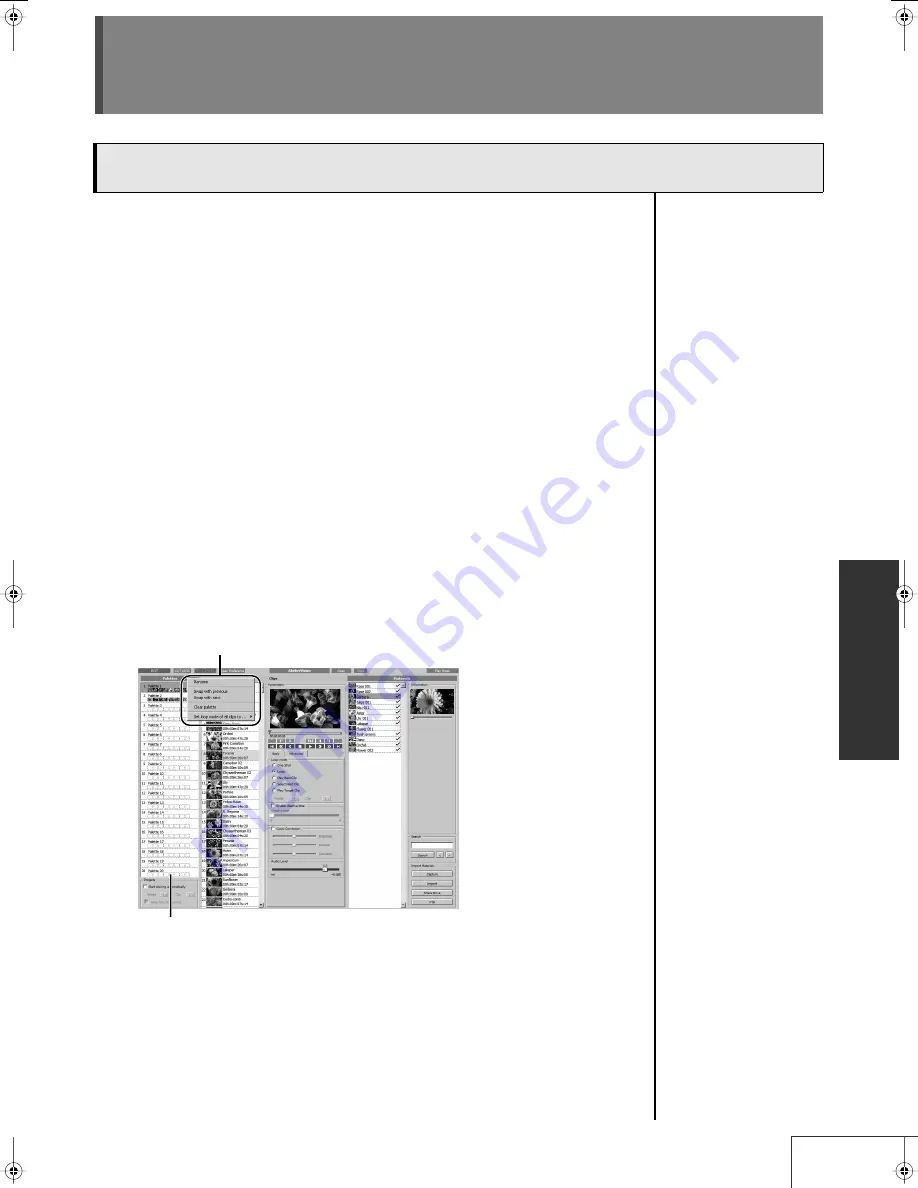
63
Practical Use
Practical Use of the PR-1000HD
7
You can make more detailed settings for projects in Presenter’s Edit mode.
In this case, you can make the following settings.
1.
Editing Palettes
→
“Editing Palettes” (p. 63)
You can alter names, rearrange palette sequences, delete clips in palettes, and perform other
editing functions.
2.
Making the Palette Settings
→
“” (p. 65)
You can make the Loop mode settings for all of the clips in a palette simultaneously.
3.
Editing Clips
→
“Editing Clips” (p. 66)
You can edit clip names, rearrange the sequence of clips, and copy and delete clips.
4.
Making the Clip Settings
→
“Making the Clip Settings” (p. 68)
Here you can set each clip’s Loop Mode settings, In point and Out point, volume levels, and more.
5.
Changing the Material Settings
→
“Changing Material Settings” (p. 74)
You can edit material names as well as copy and delete materials.
6.
Setting Automatic Playback
→
“Setting Automatic Playback” (p. 75)
You can have specified clips play back automatically when projects are loaded.
■
Editing Palettes
Here you can change palette names, rearrange palette sequences, delete clips in palettes, and perform
other editing functions.
To edit a palette, right-click on the palette and work from the context menu that is displayed.
fig.edit.palette01.fig.edit.palette01.eps
Making the Settings for the Project
Context menu
Palettes list
PR-1000HD_e.book 63 ページ 2008年1月21日 月曜日 午後8時35分
Содержание PR-1000HD
Страница 127: ...MEMO 127 ...
Страница 128: ...MEMO 128 ...
Страница 129: ...MEMO 129 ...
Страница 130: ...MEMO 130 For EU Countries For China ...
Страница 131: ...MEMO 131 ...






























